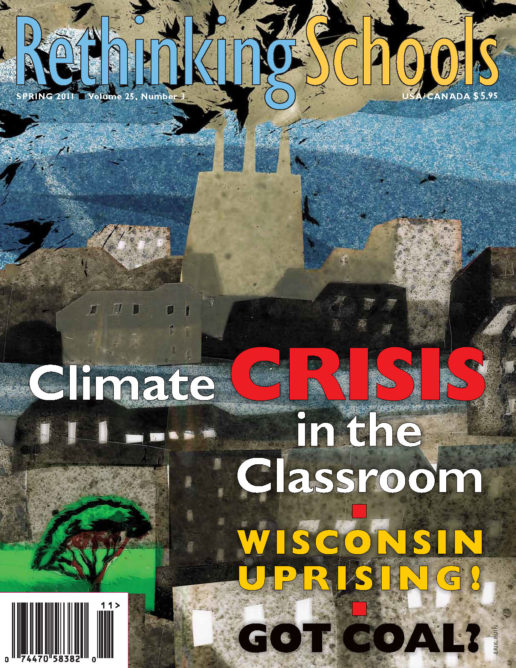Preview of Article:
Coal at the Movies
Classroom DVDs on coal and mountaintop removal mining
Dirty Business: “Clean Coal” and the Battle for Our Energy FutureBy Peter Bull
(Center for Investigative Reporting, 2010)
88 min.
Dirty Business is a long film for classroom use, but it is also the best and most comprehensive look at global dependence on coal, and explores some promising alternatives. The film is built around the work of Jeff Goodell, who wrote the important book Big Coal. Goodell begins with the devastating impact of coal mining in Appalachia. He remembers when he first saw the impact of mountaintop removal mining: “It was like the first time you look into a slaughterhouse after you’ve spent a lifetime of eating hamburgers.” The film travels to Mesquite, Nev., where residents are fighting a coal-fired plant, and also to China to explore the health impact of coal there—an important piece of the story not included in any of the other films reviewed here. The film’s strength is its exploration of alternatives to coal—wind, solar thermal, increased energy efficiency through recycling “waste heat”—which makes this a valuable resource for science as well as social studies classes. Thetreatment of carbon dioxide sequestration may confuse students; the film simultaneously suggests that this is a terrible idea in North America but a good one in China. But, on the whole, Dirty Business is a fine and lively overview of a complicated issue.

